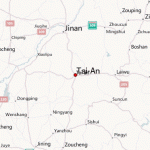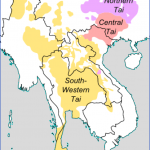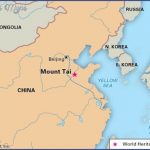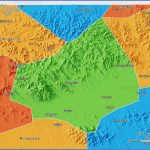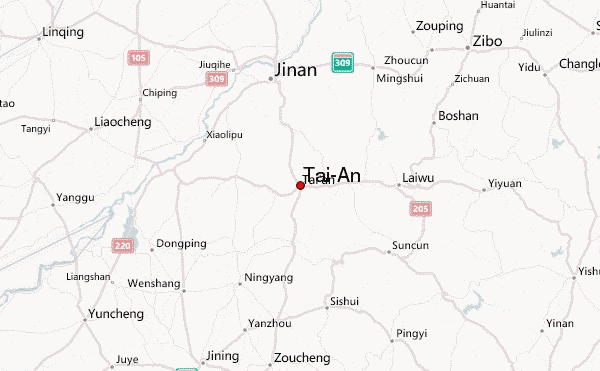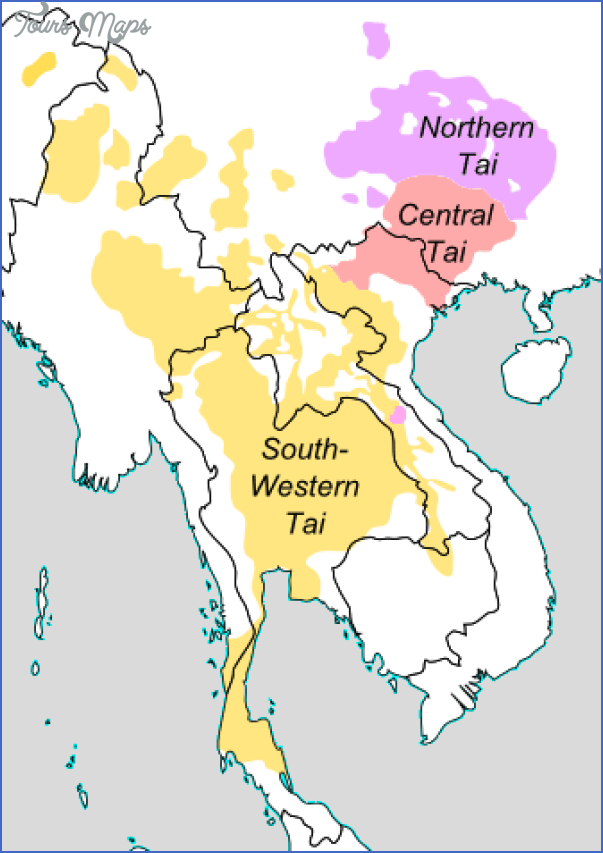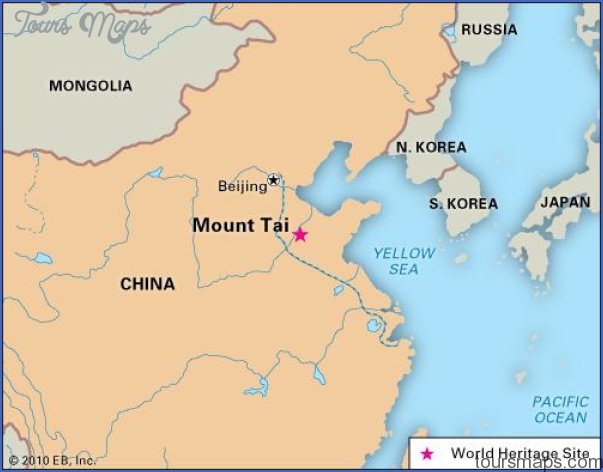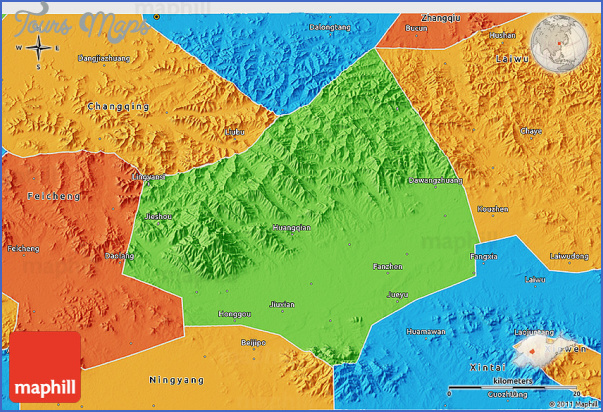Population: 1,200,000
Tai’an lies at 117°08’E and 36°12’N, in Shandong province, 70km/43’/2 miles south of Shandong, the provincial capital. There are rail and bus links with Shandong.
One of the oldest towns in the province, Tai’an enjoyed considerable prosperity as long ago as the 2nd c. b.c. In the early 12th c. it was a military base and became the capital of an important administrative district in 1182. In the centuries that followed, thanks to its proximity to Mount Taishan, it continued to gain in importance, both politically and economically.
In recent years tourism has been a growth industry. Many hotels and guest-houses have been built or extended to cater for the increasing numbers of both Chinese and foreign visitors to Mount Taishan.
The Temple of the Mountain God, in the town centre, covers an area of 9-6ha/23-7 acres and comprises 813 palaces, temples, pavilions and covered walkways. Originally built in the Qin period (221-207 b.c.) it has been frequently extended and restored right up to the present day, and is dedicated to the God of Mount Taishan.
The main building, the Hall of Heavenly Gifts, dates from 1009, and was restored in 1956.
It is said that, in a vision, the emperor saw a cloth of gold silk both at his court and on Mount Taishan. He regarded it as a gift from the God of Heaven and built this temple to express his gratitude.
The building can be compared with the Hall of Supreme Harmony in the Imperial Palace in Beijing and with the Hall of Great Achievements in the Temple of Confucius at Qufu. Measuring 49m/160ft long, 20m/66ft wide and 22m/72ft high, the temple stands on a terrace and is surrounded by a white balustrade and roofed with yellow tiles. Inside can be seen a wall-painting, 62m/203ft long and 3-3m/11ft high, from the Song period (960-1279), entitled “Departure and Return”. It portrays the Mountain God going in procession up the mountain, and shows 657 figures, numerous birds and mythical creatures, as well as some magnificent scenery.
Tai’an
Nearby is the Iron Pagoda (1533); three ofthe original thirteen floors have survived.
Iron Pagoda
In another courtyard can be seen the Eastern Seat ofthe Emperor, where at one time various rulers stayed when they came on a pilgrimage to Mount Taishan. It houses various offerings made by these emperors, such as the three “Treasures”, a lion, a jade sceptre and a porcelain calabash.
In the temple precincts can be found large numbers of commemorative stones from various periods, including an inscribed stone tablet from 209 b.c., one ofthe oldest in China. The text ofthe inscription was composed by the Qin Emperor Ershi and calligraphed by his chancellor Li Si; of the original 222 ideograms only the last ten can still be deciphered.
Also known as Mount ofthe East (Dong Yue), Mount Taishan to the north of Tai’an is the most famous of China’s Five Holy Mountains. The other four are Hengshan in Hunan province, Huashan in Shaanxi province, Hengshan in Shanxi province and Songshan in Henen province. Because it is in the east of the country, where the sun rises, Mount Taishan is treated with special reverence. For over 2000 years rulers came here to pay homage to the Gods of Heaven and Earth. The mountain stands 1545m/5070ft high and its picturesque scenery is always in the clouds. Large numbers of waterfalls, temples and pagodas all add to its natural splendour. Mount Taishan is visited by numerous Chinese and foreign walkers who also come to experience the magnificent sunrise over the mountain top.
The mountain can be climbed by either the eastern (central) or western route. It is best to choose the main route, the eastern one, because this contains most ofthe sights and places of interest. The climb to the top is about 9km/5’/2 miles, with a difference in altitude of 1350m/4430ft. Climbers can follow a flight of 6293 steps, parts of which between the Middle Gateway to Heaven and the Southern Gateway to Heaven are almost vertical.
However, there is also a mini-bus which goes to the Zongtian Men Gate, from where there is a cable-railway up to Moon View Peak (Yueguan Feng).
The climb up Mount Taishan begins at the Archway of the Mountain God, constructed of granite and supported by four pillars and dating from the mid-16th c. Further north, along a path going off to the right, the climber will pass the Pool ofthe Heavenly Queen (Wangmu Chi) and then come to the Hall ofthe Heavenly Queen (Wangmu Dian).
The actual climb begins at the Palace of the Vermilion Gate, where at one timethe Emperor would don his ceremonial robes before setting out on his pilgrimage climb up Mount Taishan. The date the palace was originally built is not known. It was last completely renovated in 1626, but since then a number of restoration attempts have proved necessary.
In front ofthe palace stand three gateways of white marble, one of which is named after Confucius (Kongzideng Lin Chu), who rested here for a short while before setting off up the mountain.
The next stop is the Archway of the Ten Thousand Immortals, built in 1620 and restored in 1954. Here the climber can see some commemorative stones with inscriptions dating from the Ming period (1368-1644).
Next will be seen the Taoist Palace of the Goddess of the Great Bear (Doumu Gong).
Continuing north the visitor will come to he Hutian Ge Pavilion, or Pavilion ofthe Heavenly Cauldron.
Tai’an Map Photo Gallery
Maybe You Like Them Too
- The Best Cities To Visit in The World
- World’s 10 Best Places To Visit
- Coolest Countries in the World to Visit
- Travel to Santorini, Greece
- Map of Barbados – Holiday in Barbados

